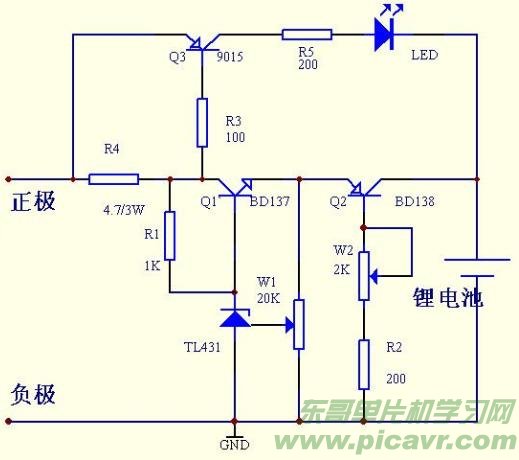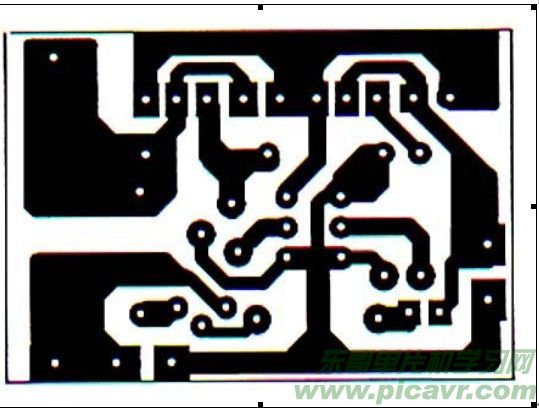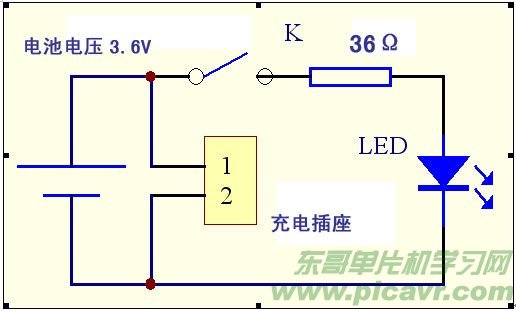1. Lithium battery and nickel-cadmium and nickel-hydrogen rechargeable battery:
The negative electrode of a lithium ion battery is a graphite crystal, and the positive electrode is usually lithium dioxide. Lithium ions move from the positive electrode to the negative electrode during charging and are embedded in the graphite layer. During discharge, lithium ions are detached from the surface of the negative electrode in the graphite crystal and moved toward the positive electrode. Therefore, during the charging and discharging of the battery, lithium always appears in the form of lithium ions, rather than in the form of metallic lithium. Therefore, this type of battery is called a lithium ion battery, or a lithium battery.
The lithium battery has the advantages of small volume, large capacity, light weight, no pollution, high single-section voltage, low self-discharge rate, and many battery cycles, but the price is relatively expensive. Nickel-cadmium batteries are gradually being phased out due to their low capacity, serious self-discharge, and pollution to the environment. Ni-MH batteries have a high performance-price ratio and do not pollute the environment, but the cell voltage is only 1.2V, which is limited in the scope of use.
Second, the characteristics of lithium battery:
1. It has higher weight-to-energy ratio and volume-to-energy ratio;
2, the voltage is high, the single-cell lithium battery voltage is 3.6V, which is equal to the series voltage of 3 nickel-cadmium or nickel-hydrogen rechargeable batteries;
3, self-discharge can be stored for a long time, this is the most outstanding superiority of the battery;
4. No memory effect. Lithium batteries do not have the so-called memory effect of nickel-cadmium batteries, so lithium batteries do not need to be discharged before charging;
5, long life. Under normal working conditions, the number of charge/discharge cycles of the lithium battery is much greater than 500 times;
6, can be quickly charged. The lithium battery can usually be charged with a current of 0.5 to 1 times, so that the charging time is shortened to 1 to 2 hours;
7, can be used in parallel;
8. Because the battery does not contain heavy metal elements such as cadmium, lead and mercury, it is environmentally friendly and is the most advanced green battery in the world;
9, high cost. Lithium batteries are more expensive than other rechargeable batteries.
Third, the internal structure of the lithium battery:
Lithium batteries usually have two shapes: cylindrical and rectangular.
The inside of the battery adopts a spiral wound structure, and is formed by spacing a positive and negative electrode with a very fine and highly permeable polyethylene film insulation material. The positive electrode includes a lithium ion collector composed of lithium and cobalt dioxide and a current collector composed of an aluminum film. The negative electrode is composed of a lithium ion collector composed of a sheet-like carbon material and a current collector composed of a copper film. The battery is filled with an organic electrolyte solution. Safety valves and PTC components are also included to protect the battery from damage during abnormal conditions and output short circuits.
The voltage of a single-cell lithium battery is 3.6V, and the capacity cannot be infinite. Therefore, single-cell lithium batteries are often serially and parallelly processed to meet the requirements of different occasions. String 5
Fourth, the charge and discharge requirements of lithium batteries;
1. Lithium battery charging: According to the structural characteristics of the lithium battery, the maximum charging termination voltage should be 4.2V, and it should not be overcharged. Otherwise, the lithium ion of the positive electrode will be taken too much, and the battery will be scrapped. The charging and discharging requirements are relatively high, and a dedicated constant current and constant voltage charger can be used for charging. Normally, the constant current is charged to 4.2V/section and then switched to constant voltage charging. When the constant voltage charging current drops to within 100mA, the charging should be stopped.
Charging current (mA) = 0.1 ~ 1.5 times the battery capacity (such as 1350mAh battery, its charging current can be controlled between 135 ~ 2025mA). The normal charging current can be selected to be about 0.5 times the battery capacity, and the charging time is about 2 to 3 hours.
2. Discharge of lithium battery: Due to the internal structure of the lithium battery, lithium ions cannot all move to the positive electrode during discharge, and some lithium ions must be kept at the negative electrode to ensure that lithium ions can be smoothly inserted into the channel during the next charging. Otherwise, the battery life will be shortened accordingly. In order to ensure that some lithium ions remain in the graphite layer after discharge, it is necessary to strictly limit the minimum voltage at the end of discharge, that is, the lithium battery cannot be over-discharged. The discharge termination voltage is usually 3.0V/section and the minimum cannot be lower than 2.5V/section. The length of battery discharge is related to the battery capacity and discharge current. Battery discharge time (hours) = battery capacity / discharge current. Lithium battery discharge current (mA) should not exceed 3 times the battery capacity. (For example, 1000mAH battery, the discharge current should be strictly controlled within 3A) otherwise the battery will be damaged.
At present, the lithium battery packs sold on the market are sealed with matching charging and discharging protection boards. Just control the external charge and discharge current.
Five, lithium battery protection circuit:
The charge and discharge protection circuit of two lithium batteries is shown in Figure 1. It consists of two FETs and a dedicated protection integrated block S--8232. The overcharge control transistor FET2 and the overdischarge control transistor FET1 are connected in series to the circuit. The protection IC monitors the battery voltage and controls it when the battery voltage rises to 4.2V. The overcharge protection tube FET1 is turned off to stop charging. In order to prevent malfunction, a delay capacitor is generally added to the external circuit. When the battery is in the discharged state and the battery voltage drops to 2.55 V, the overdischarge control transistor FET1 is turned off, and the supply of power to the load is stopped. Overcurrent protection is to control the FET1 to turn off and stop discharging to the load when a large current flows through the load, in order to protect the battery and the FET. Overcurrent detection uses the on-resistance of the FET as a sense resistor, monitors its voltage drop, and stops discharging when the voltage drop exceeds the set value. A delay circuit is also generally added to the circuit to distinguish between inrush current and short circuit current. The circuit is fully functional, reliable, but professional, and the dedicated integrated block is not easy to buy, amateurs are not easy to copy.

Sixth, simple charging circuit:
There are now many merchants selling single-cell lithium batteries without a charging pad. Its superior performance and low price can be used for the replacement of self-made products and lithium battery packs, which is very popular among electronics enthusiasts. Interested readers can refer to Figure 2 to make a charging board. The principle is to charge the battery with a constant voltage to ensure that it does not overcharge. The input DC voltage is higher than the charged battery voltage by 3 volts. R1, Q1, W1 and TL431 form a precision adjustable voltage regulator circuit, Q2, W2 and R2 form an adjustable constant current circuit, and Q3, R3, R4, R5 and LED are charging indicating circuits. As the voltage of the rechargeable battery rises, the charging current will gradually decrease. After the battery is fully charged, the voltage drop across R4 will decrease, so that Q3 will be turned off and the LED will be extinguished. To ensure that the battery is sufficient, please continue after the indicator is off. Charge for 1-2 hours. Please use the appropriate heat sink for Q2 and Q3 when using. The advantages of this circuit are: simple production, easy purchase of components, safe charging, intuitive display, and will not damage the battery. By changing W1, multiple series lithium batteries can be charged, and changing W2 can adjust the charging current in a wide range. The disadvantage is: no overdischarge control circuit. Figure 3 is a printed circuit diagram of the charging board (perspective view from the component side).


Seven, single-cell lithium battery application examples
1, for battery repair replacement
There are many battery packs: such as those used on laptops. After repairs, this battery pack is damaged only when there is a problem with individual batteries. It can be replaced with a suitable single-cell lithium battery.
2, making a highlight flashlight
I used a single 3.6V1.6AH lithium battery with a white ultra-high brightness tube to make a miniature flashlight, easy to use, small and beautiful. And because of the large battery capacity, the average use of half an hour per night, has not been charged for more than two months. The circuit is shown in Figure 4.

3, instead of 3V power supply
Since the single-cell lithium battery voltage is 3.6V. Therefore, only one lithium battery can replace two ordinary batteries, and power supply for small household appliances such as radios, walkmans, cameras, etc., not only light weight, but also long-term continuous use.
Eight, the preservation of lithium batteries:
The lithium battery needs to be fully charged and stored. It can be stored for more than half a year at 20 ° C. It can be seen that the lithium battery is suitable for storage at low temperatures. It has been suggested that it is a good idea to put the rechargeable battery in the freezer of the refrigerator.
Nine, the precautions for use:
Lithium batteries must not be disintegrated, drilled, pierced, sawed, pressurized, or heated, otherwise serious consequences may result. Lithium batteries without a charging protection plate are not short-circuited and are not suitable for children to play with. Can't get close to flammables or chemicals. Disposable lithium batteries should be disposed of properly. Fourth, the charge and discharge requirements of lithium batteries;
1. Lithium battery charging: According to the structural characteristics of the lithium battery, the maximum charging termination voltage should be 4.2V, and it should not be overcharged. Otherwise, the lithium ion of the positive electrode will be taken too much, and the battery will be scrapped. The charging and discharging requirements are relatively high, and a dedicated constant current and constant voltage charger can be used for charging. Normally, the constant current is charged to 4.2V/section and then switched to constant voltage charging. When the constant voltage charging current drops to within 100mA, the charging should be stopped.
Charging current (mA) = 0.1 ~ 1.5 times the battery capacity (such as 1350mAh battery, its charging current can be controlled between 135 ~ 2025mA). The normal charging current can be selected to be about 0.5 times the battery capacity, and the charging time is about 2 to 3 hours.
2. Discharge of lithium battery: Due to the internal structure of the lithium battery, lithium ions cannot all move to the positive electrode during discharge, and some lithium ions must be kept at the negative electrode to ensure that lithium ions can be smoothly inserted into the channel during the next charging. Otherwise, the battery life will be shortened accordingly. In order to ensure that some lithium ions remain in the graphite layer after discharge, it is necessary to strictly limit the minimum voltage at the end of discharge, that is, the lithium battery cannot be over-discharged. The discharge termination voltage is usually 3.0V/section and the minimum cannot be lower than 2.5V/section. The length of battery discharge is related to the battery capacity and discharge current. Battery discharge time (hours) = battery capacity / discharge current. Lithium battery discharge current (mA) should not exceed 3 times the battery capacity. (For example, 1000mAH battery, the discharge current should be strictly controlled within 3A) otherwise the battery will be damaged.
At present, the lithium battery packs sold on the market are sealed with matching charging and discharging protection boards. Just control the external charge and discharge current.
The ultra-thin precision cutting of the Anti-Peep Screen Protector means that you can enjoy a perfect touch screen experience without allowing anything on the screen to be peeped. Whether you place your phone horizontally or vertically, Privacy Screen Protector can protect your personal Information and sensitive information are protected from harm by strangers. People around you cannot see the contents of your phone, so your details are safe.
The use of soft TPU material can really cover the entire screen.
With self-healing function, it can automatically repair bubbles and scratches within 24 hours.
The 0.14mm Ultra-Thin Protective Film can maintain the sensitivity of the touch screen to accurately respond to your touch.
The oleophobic and waterproof coating prevents fingerprints, oil stains and other substances from adhering to it and keeps the screen clean.
If you want to know more about Privacy Screen Protector products, please click Product Details to view the parameters, models, pictures, prices and other information about Privacy Screen Protector products.
Whether you are a group or an individual, we will try our best to provide you with accurate and comprehensive information about Privacy Screen Protector!
Anti-Spy Hydrogel Screen Protector, Privacy Protection Film, Protection Film, Privacy Film, Privacy Screen Protective Film, Soft Film
Shenzhen Jianjiantong Technology Co., Ltd. , https://www.morhoh-sz.com
